“Investigative journalism is a lifetime of uncovering other people’s and government’s lies.” — Donald R. Winslow, National Press Photographers Association, Facebook, May 11, 2015
Robert Capa’s habit of self-invention proved contagious for John Morris, who considered Capa his “adopted Hungarian brother.” Both of them manifest the condition Steven Colbert named “truthiness,” which the comic and late-night host formally defined as “the belief in what you feel to be true rather than what the facts will support.”
Not only has Morris consistently turned a blind eye to Capa’s tendency to play fast and loose with facts and truth, as detailed in my previous post, but he evinces the same inclinations in his own work, going back some 70 years. In his case, it has primarily taken the form of resumé inflation.
The February 1946 issue of Popular Photography presented the following as a biographical note at the end of the article “Photographers Ran the War” by John Morris:
John G. Morris, as London Picture Editor for Life, had charge of the assignment of photographers, of editorial research on picture stories, and of the darkroom. After D-Day, he handled all of Life‘s pictures from the Western Front, and just as his job was reaching its peak, the buzz bombing began. Morris kept the bureau working twenty-four hours a day right through it. Finally, the saying went that a man was a coward to leave London for the front. But Morris left, hitch-hiking across the Channel to join the First Army press camp as field coordinator for the U.S. Still Photo Pool in Normandy. The war soon began to go so fast that it was ‘impossible to coordinate,’ so he returned to London, but flew to France a second time, three days after the fall of Paris. There he subsisted on a diet of K-rations and champagne and helped re-establish Life‘s Paris bureau. Returning to the States in December, 1944, he took charge of Life‘s Chicago bureau for a time, was drafted, and a few months later discharged, and he has now returned to Life‘s picture department — The Editors.” (p. 143)
Much of this — presumably based on information provided by Morris and written by John R. Whiting, Pop Photo‘s managing editor at the time, if not written by Morris himself — qualifies as pure self-aggrandizement. Morris never held the official title of “London Picture Editor” for Life. His masthead title in Life‘s D-Day issue reads “assistant picture editor,” listed as such in lowercase under “Staff Photographers.” All other titles on the masthead are capitalized.
On the picture-making side, what Morris would later refer to in his memoir as “My own invasion team … my team” consisted of six photographers, most of them older and more professionally accomplished than he, a mere 27 at the time. They included Frank Scherschel, 37, publishing since 1926; George Rodger, 36, publishing since 1936; Capa, age 30, publishing since 1932; Bob Landry, also 30, publishing in LIFE since 1940, elsewhere well before that; David Scherman, 27, publishing in LIFE since 1936; and Ralph Morse, 26, LIFE‘s youngest World War II correspondent when hired for that role in 1942, publishing elsewhere well before that — the only member of “my team” younger than Morris.
Morris had no say in the assembling of this group; most had come to LIFE before he did, selected by Morris’s boss Wilson Hicks, LIFE‘s chief picture editor. Given the minimal authority Morris exercised over these photographers, along with his youth and inexperience in relation to most of them, I find his use of the proprietary locutions “my own team/my team” — as distinct from the egalitarian “our team” — revealing.
In point of fact, Morris had no authority to hire or fire anyone, nor did he “ha[ve] charge of the assignment of photographers.” He had no authority to dictate their assignments, war-related or otherwise. (Given his lack of combat experience, these battle-hardened veterans surely would have found that presumptuous.) Whenever they were in London between combat assignments — for which they got approval directly from the New York office — these photographers all checked in with Morris. But, as he himself indicates, peevishly, in his memoir, they, along with the London-based photo staffers and stringers, felt free to reject any story ideas he cooked up for soft local-color pieces (as Capa and others did). They would even bypass him entirely and develop UK-specific feature stories with LIFE staff writers (as Landry did with Walter Graebner).
On behalf of the magazine, Walter Graebner, officially head of the London bureau of Time & Life, had negotiated with the press division of Supreme Headquarters Allied Expeditionary Force (SHAEF). He secured slots for two of LIFE‘s photographers, Capa and Landry, to go in with early waves of the invasion — two slots out of a total of four for the entire press contingent, a mark of the publication’s international prestige and clout. (No military document lists press correspondents or photographers among the personnel transported in the first few waves, which carried only essential personnel — combat troops, demolition teams, medics — plus vehicles and assault-related equipment.)
The six photographers named above (and pictured below), accredited by both LIFE and the military, had distributed themselves among the land, sea, and air forces for the invasion, electing to accompany troops with which they had previous relationships or to which they had logical connections, according to arrangements they’d made on their own, in which Morris played no role. SHAEF decided when and where those troops would land, keeping that secret from the photographers until they were sequestered shortly before the armada sailed, and secret from the press (Morris included) and public until after the landing had begun.
Somewhere along the military chain of command, SHAEF also assigned the U.S. Navy’s beachmasters to the various sectors and determined the system by which they would gather and arrange transport to London for the photographers’ films, whose arrival time — assuming they did arrive — no one could predict. These beachmasters functioned as “traffic cops” for their sectors; their briefs, if they listed Morris at all, did so merely as the designated contact person for news relating to the magazine’s photographers and recipient of any successfully transported film.
(Platoon Commander Joseph P. Vaghi served as Beachmaster of the Easy Red sector on Omaha Beach, where Capa landed. According to Vaghi’s account, he and his contingent arrived on LCI(L)-88, “the first LCI(L) on Easy Red Beach. … Platoon C-8 of the 6th Battalion arrived in France at 7:35 AM, British Double Time on June 6, 1944, one hour and five minutes after H-Hour.” Traveling with them was New Yorker correspondent A. J. Liebling.)
•
As he did once or twice every week, Morris would then pick from the incoming film the best of the lot on hand at deadline, for the darkroom to print up in quadruplicate; work up captions for them from the information the photographers provided (his “editorial research on picture stories”); and run them past the censors, who would decide which ones he could send to New York and turn over to the press pool. Then he’d head for the courier’s pouch with the package for the New York office, and from there to the press pool, for all the world like the CBOB (“college boy office boy”) he’d been at LIFE in New York when he started out, racing the next issue’s layout boards to Grand Central Station to catch the Twentieth Century Limited to Chicago and LIFE‘s printing plant.
On the image-processing side, Morris nominally had charge of the darkroom. But, then as now, he remained willfully ignorant of photographic practice and darkroom procedures. So he really had nothing to say about any of that, sensibly leaving it all in the demonstrably capable hands of the London bureau’s darkroom chief, H. C. “Braddy” Bradshaw.
Since he was not in charge of LIFE‘s London bureau (that was the role of Graebner, Morris’s immediate superior in London), Morris in no way “kept the bureau working twenty-four hours a day right through [the buzz-bombing],” which began on June 13, just a week after D-Day. Credit for keeping the bureau itself working through that period belongs to Graebner, and of course to the bureau’s entire staff, which carried on stoically; maintenance of the darkroom’s productivity, to which Morris was only an onlooker, fell on the shoulders of “Braddy” Bradshaw.
As for Morris “join[ing] the First Army press camp as field coordinator for the U.S. Still Photo Pool in Normandy” in mid-July, he cheerfully admits in his memoir that this was not an official LIFE designation, nor a SHAEF position, but rather “a position I had invented” in order to get a look at the war. The fact that Morris could take a month-long leave of absence from his editorial duties during this critical phase of the war in Europe suggests that Hicks did not consider his presence in the London bureau essential at that point. Apparently theat office got along just fine without him. (Decades later, this trip would become enormously profitable for Morris; more on that anon.)
Finally, in Paris after its liberation, he ate quite well at the Hôtel Scribe “for virtually nothing,” according to Get the Picture — a far cry from “subsist[ing] on a diet of K-rations.” Indeed, his memoir makes it clear that whether in New York, in London, in Paris, or even in Normandy during his brief sojourn there, the combination of Time & Life’s expense account, access to the Army PX (a benefit of military accreditation as a journalist), and Capa’s bartering skills ensured that Morris lived high off the hog throughout the war, unaffected by rationing and food shortages.
Having thus established a baseline for John Morris’s commitment to factual accuracy and truth, I will turn (after a brief hiatus) to a summary of his role in the creation of the Capa D-Day myth — which, necessarily, overlaps his own legendary status — and the tale that Morris promulgated for 70 years, as well as the confusion he has actively sown over the past several years with his awkward revisions of his original narrative. (To be continued.)
•
This post supported in part by a donation from John Lee.
•
(For an index of links to all posts in this series, click here.)
•
 Special offer: If you want me to either continue pursuing a particular subject or give you a break and (for one post) write on a topic — my choice — other than the current main story, make a donation of $50 via the PayPal widget below, indicating your preference in a note accompanying your donation. I’ll credit you as that new post’s sponsor, and link to a website of your choosing. Include a note with your snail-mail address (or email it to me separately) for a free signed copy of my 1995 book Critical Focus!
Special offer: If you want me to either continue pursuing a particular subject or give you a break and (for one post) write on a topic — my choice — other than the current main story, make a donation of $50 via the PayPal widget below, indicating your preference in a note accompanying your donation. I’ll credit you as that new post’s sponsor, and link to a website of your choosing. Include a note with your snail-mail address (or email it to me separately) for a free signed copy of my 1995 book Critical Focus!



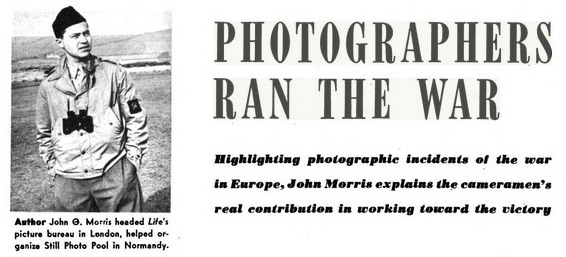
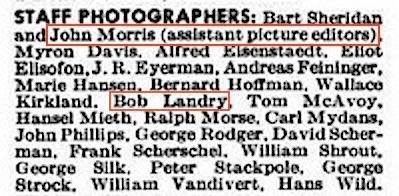
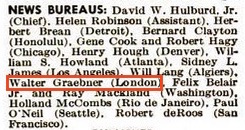
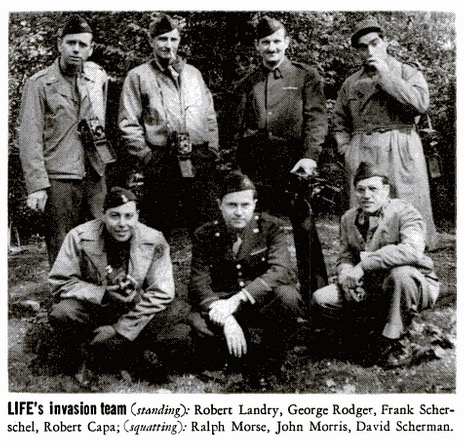
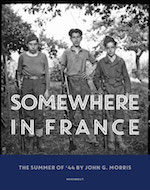




Leave a Comment